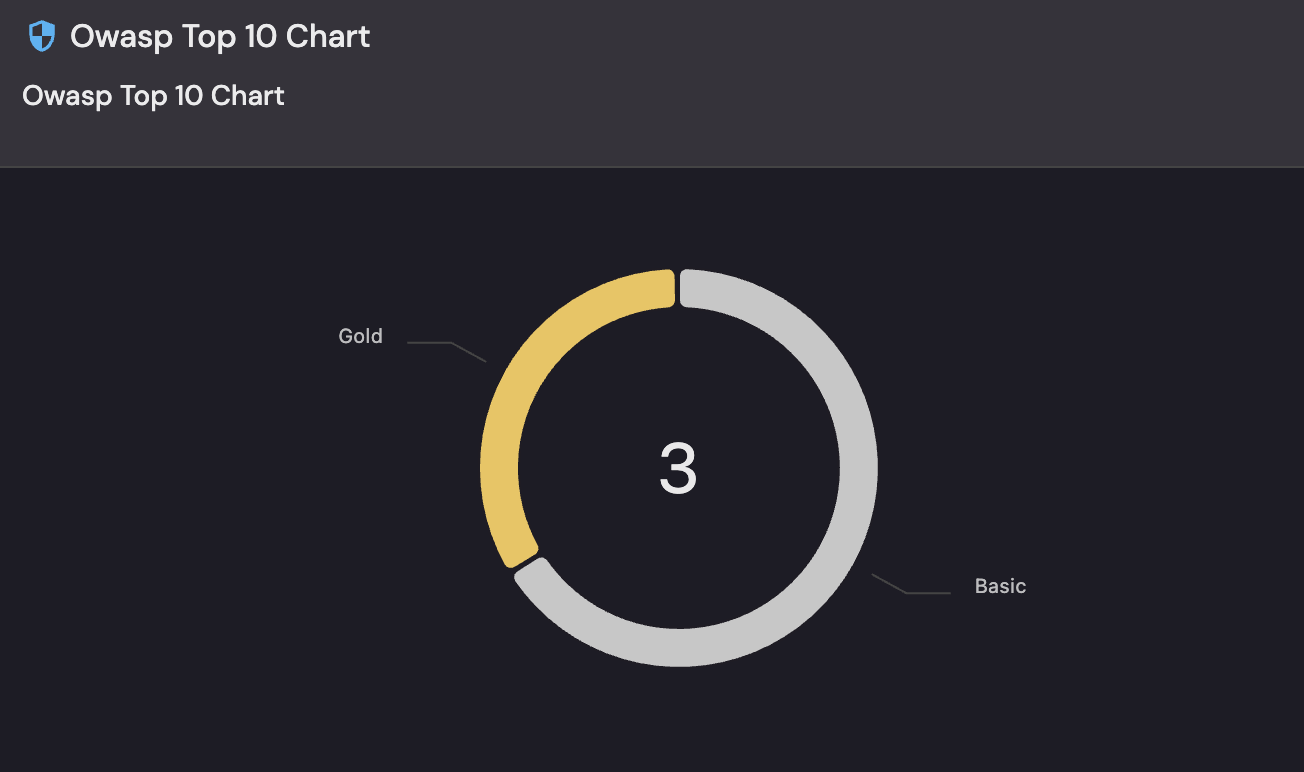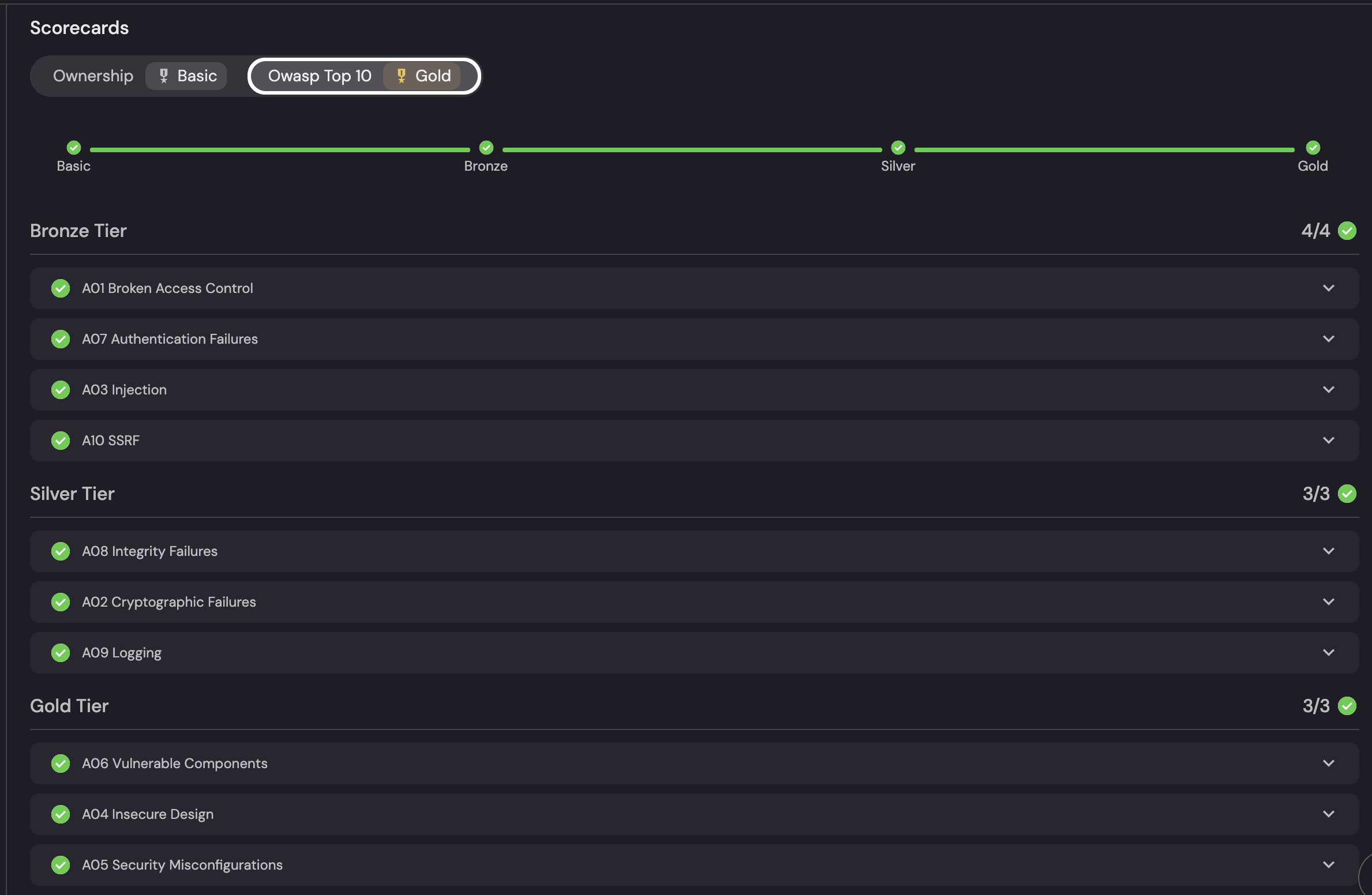Security champions & initiatives
Port empowers organizations to scale security culture by making secure development measurable, actionable, and rewarding.
Introduction
The most successful security programs are not built by security teams alone—they are built by empowering every developer to take part in protecting the business.
Traditional approaches rely on:
- Mandatory training sessions.
- Security checklists.
- Penalty-driven compliance.
These often create friction between security and engineering teams and fail to build sustainable engagement.
The reality: most developers want to build secure software but are overwhelmed by:
- Conflicting security requirements.
- Unclear guidance.
- Tools that slow them down.
The solution is to make security the easy and rewarding choice through:
- Clear standards and expectations.
- Automated guardrails.
- Recognition and motivation for security-positive behaviors.
Port provides the foundation to scale these efforts by connecting people, processes, and technology in one platform.
Why many security champion programs fail
Most security champion programs start with enthusiasm but fizzle out due to poor execution.
| Common Failure | Impact on the Program |
|---|---|
| Unclear expectations | Champions are unsure of their role beyond vague directives like "promote security." |
| No measurable outcomes | Progress is tracked by activity (training hours) rather than meaningful results (vulnerabilities reduced). |
| Tool friction | Security tools create extra work without providing developers clear value or context. |
| Recognition gaps | Champions take on extra responsibilities without career incentives or visibility. |
| Unsustainable model | Programs rely on a few motivated individuals who eventually burn out. |
Port's approach: measurable, sustainable, scalable
Port turns security champions programs from volunteer-driven efforts into systematic, measurable cultural transformation initiatives.
It does this through three pillars:
- Scorecards – to set clear standards and expectations.
- Initiatives – to create momentum and shared goals.
- Guardrails & Automation – to make secure development frictionless.
1. Scorecards: defining security success
Scorecards in Port translate abstract security principles into concrete, trackable practices for teams and services.
Each scorecard contains criteria that teams can directly influence.
Application security scorecard
Track practices that prevent vulnerabilities from reaching production:
- Dependency management – Vulnerable dependencies are updated promptly.
- Secure coding practices – Security linters and SAST integrated into CI/CD.
- Access controls – Proper authentication and authorization in place.
- Data protection – Sensitive data handled according to policy.
- Security testing – Security tests included in CI/CD pipelines.
Port’s Scorecards make Application security success concrete. Scorecards can turn the OWASP Top-10 into tiered, measurable targets—Basic → Bronze → Silver → Gold. This helps teams see exactly what “good” looks like and how far they’ve progressed.
- Risk-aligned tiers: Bronze (exploit blockers), Silver (crypto/logging integrity), Gold (design & config hardening) map effort to impact.
- Clear pass criteria: Each OWASP control has an explicit check; green checks show what’s met (e.g., A01, A07, A03, A10 at Bronze; A08, A02, A09 at Silver; A06, A04, A05 at Gold).
- Instant posture view: The horizontal progress bar shows portfolio maturity at a glance—no hunting through scans.
- Ownership built-in: Scorecards can be filtered by service/team, turning standards into accountable goals.
- Automation hooks: Fail a control → open ticket/notify/optionally gate deploys; pass → record evidence for audits.
- Continuous improvement: Teams climb tiers over time, moving from break-fix to secure-by-design, tracked in one place.


Infrastructure security scorecard
Ensure infrastructure is deployed and maintained securely:
- Network security – Proper segmentation and firewall rules.
- IAM hygiene – Enforcing least-privilege principles.
- Encryption standards – Data encryption at rest and in transit.
- Configuration management – Systems hardened consistently.
- Logging & monitoring – Security events captured and monitored.
Operational security scorecard
Measure preparedness and response capabilities:
- Incident response readiness – Runbooks updated and teams trained.
- Vulnerability management – Vulnerabilities triaged and remediated within SLA.
- Access reviews – Regular audits of permissions and roles.
- Backup and recovery – Recovery processes tested regularly.
- Compliance tracking – Audit trails maintained and up-to-date.
Focus scorecards on practices that teams directly control to ensure quick wins and early adoption.
2. Initiatives: driving momentum and engagement
Scorecards define what good looks like.
Initiatives provide the why and when, turning goals into campaigns that drive real change.
Progressive improvement campaigns
Rather than demanding 100% compliance immediately, focus on specific, achievable improvements.
Examples:
- Zero critical vulnerabilities – Eliminate critical vulnerabilities in production systems.
- Secrets management adoption – Drive adoption of secure secrets storage practices.
- Branch protection compliance – Ensure all production repos enforce branch protection rules.
These campaigns can be tracked in Port through:
- Dashboards that visualize campaign progress.
- Automated alerts when thresholds are reached.
- Scorecard metrics tied to completion targets.
Recognition and gamification
Security is a team sport.
Recognizing and rewarding improvements encourages ongoing participation.
Examples:
- Leaderboards – Rank teams by their improvement scores.
- Achievement badges – Reward milestones like "90% scorecard compliance.
- Improvement showcases – Share success stories at company all-hands.
- Cross-team learning sessions – High-performing teams teach others.
3. Guardrails and automation: secure by default
Secure practices must be built into the development workflow so teams don’t rely solely on manual checks.
Automated policy enforcement
Use Port automations to enforce policies automatically, reducing human error:
- Auto-enable branch protection rules on new repos (Setup branch protection rules).
- Block deployments with critical vulnerabilities detected by scanners like Trivy or Wiz.
- Prevent commits with hardcoded secrets.
- Require security scan gates to pass before production deployments.
Self-service security actions
Make security tools and processes easily accessible through self-service actions:
- Trigger security scans on-demand.
- Submit vulnerability exception requests.
- Request consultations with security teams.
- Check compliance status before releases.
By making security self-service and embedded, teams fix issues faster without waiting on central security bottlenecks.
Putting security champions into practice
Step 1: identify and empower champions
- Selection – Choose respected developers with influence and interest in security.
- Time allocation – Dedicate 10–20% of their role to security initiatives.
- Training – Provide certifications and ongoing education.
- Career growth – Recognize champion contributions in performance reviews and promotions.
Step 2: define clear expectations
Champions should have specific, measurable responsibilities:
- Review code for security issues.
- Lead team-level security training.
- Drive scorecard improvements.
- Report vulnerabilities and guide remediation.
Success is tracked through:
- Team scorecard performance.
- Remediation timelines.
- Training engagement rates.
Step 3: implement scorecards
Start small with key security practices:
- Track GitLab project maturity.
- Add service-level scorecards for application, infrastructure, and operational practices.
- Gradually expand to advanced metrics like incident response and compliance readiness.
Step 4: establish continuous improvement
Create a cycle of review, plan, and improve:
- Monthly reviews – Assess scorecard performance.
- Quarterly planning – Launch new improvement campaigns.
- Retrospectives – Analyze incidents to identify systemic fixes.
- Cross-team forums – Share practices and lessons learned.
Balance automation and human judgment:
Automation accelerates security, but always provide clear escalation paths for exceptions and edge cases.
Measuring cultural change
Track cultural indicators to understand program health:
| Metric | What It Shows |
|---|---|
| Proactive issue reporting | Teams are finding and reporting issues before external discovery. |
| Training engagement | Developers are participating actively in security education. |
| Cross-team collaboration | Security knowledge is being shared across teams. |
| Tool adoption | Teams are adopting security tools voluntarily, not just out of compliance. |
Success metrics for security champion programs
You’ll know the program is working when:
- Champions are seen as trusted technical leaders by their peers.
- Teams compete to improve scorecard scores instead of seeing compliance as a burden.
- Security improvements happen organically, not only through mandates.
- Security incidents are treated as learning opportunities, not blame games.
- New developers are mentored on security by their teams, not just the central security group.
Outcomes with Port
Organizations using Port to power their champions program have achieved:
- Fewer vulnerabilities reaching production thanks to proactive team ownership.
- Faster remediation times due to automated triage and self-service fixes.
- Reduced deployment delays by integrating security earlier in workflows.
- Improved training completion driven by peer-to-peer champion-led programs.
Security champions bridge the gap between security strategy and engineering execution.
With Port, you can:
- Define clear expectations through scorecards.
- Drive progress with initiatives and campaigns.
- Automate guardrails to make security seamless.
- Measure cultural change with actionable metrics.